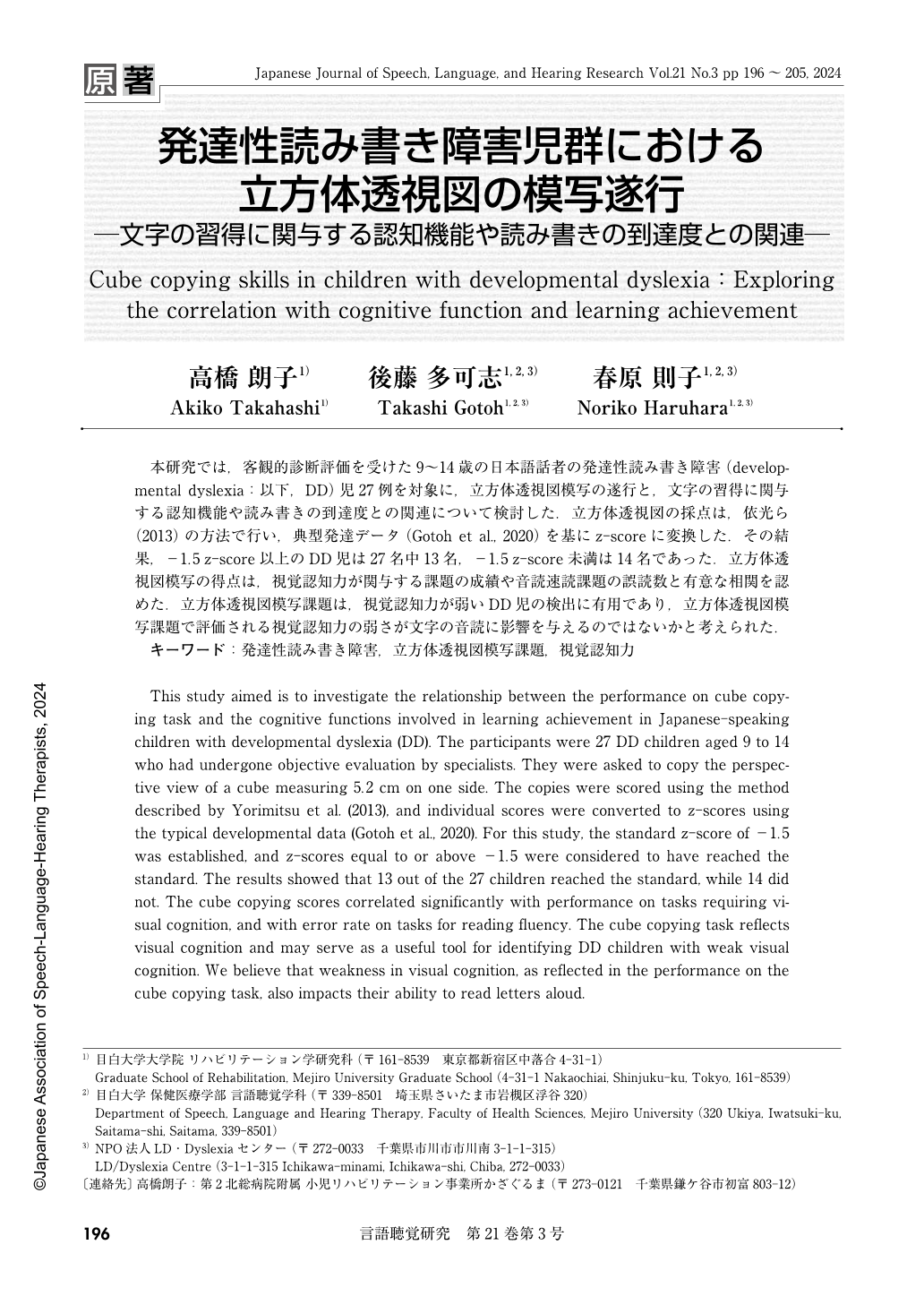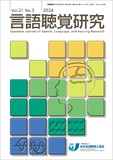Japanese
English
- 有料閲覧
- Abstract 文献概要
- 1ページ目 Look Inside
- 参考文献 Reference
本研究では,客観的診断評価を受けた9〜14歳の日本語話者の発達性読み書き障害(developmental dyslexia:以下,DD)児27例を対象に,立方体透視図模写の遂行と,文字の習得に関与する認知機能や読み書きの到達度との関連について検討した.立方体透視図の採点は,依光ら(2013)の方法で行い,典型発達データ(Gotoh et al., 2020)を基にz-scoreに変換した.その結果,-1.5z-score以上のDD児は27名中13名,-1.5z-score未満は14名であった.立方体透視図模写の得点は,視覚認知力が関与する課題の成績や音読速読課題の誤読数と有意な相関を認めた.立方体透視図模写課題は,視覚認知力が弱いDD児の検出に有用であり,立方体透視図模写課題で評価される視覚認知力の弱さが文字の音読に影響を与えるのではないかと考えられた.
This study aimed is to investigate the relationship between the performance on cube copying task and the cognitive functions involved in learning achievement in Japanese-speaking children with developmental dyslexia (DD). The participants were 27 DD children aged 9 to 14 who had undergone objective evaluation by specialists. They were asked to copy the perspective view of a cube measuring 5.2 cm on one side. The copies were scored using the method described by Yorimitsu et al. (2013), and individual scores were converted to z-scores using the typical developmental data (Gotoh et al., 2020). For this study, the standard z-score of -1.5 was established, and z-scores equal to or above -1.5 were considered to have reached the standard. The results showed that 13 out of the 27 children reached the standard, while 14 did not. The cube copying scores correlated significantly with performance on tasks requiring visual cognition, and with error rate on tasks for reading fluency. The cube copying task reflects visual cognition and may serve as a useful tool for identifying DD children with weak visual cognition. We believe that weakness in visual cognition, as reflected in the performance on the cube copying task, also impacts their ability to read letters aloud.

Copyright © 2024, Japanese Association of Speech-Language-Hearing Therapists. All rights reserved.


